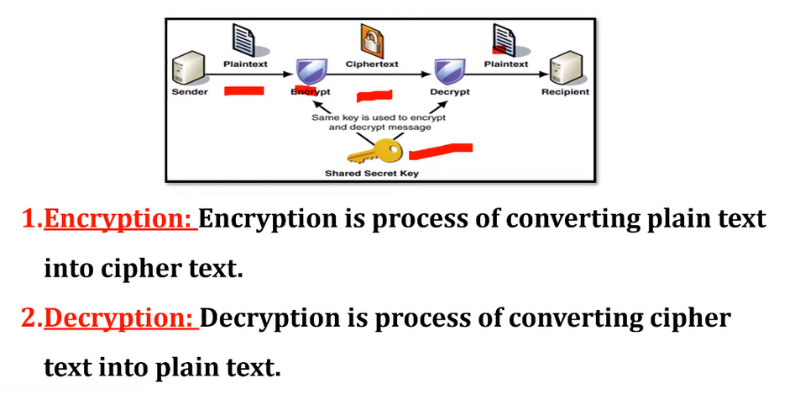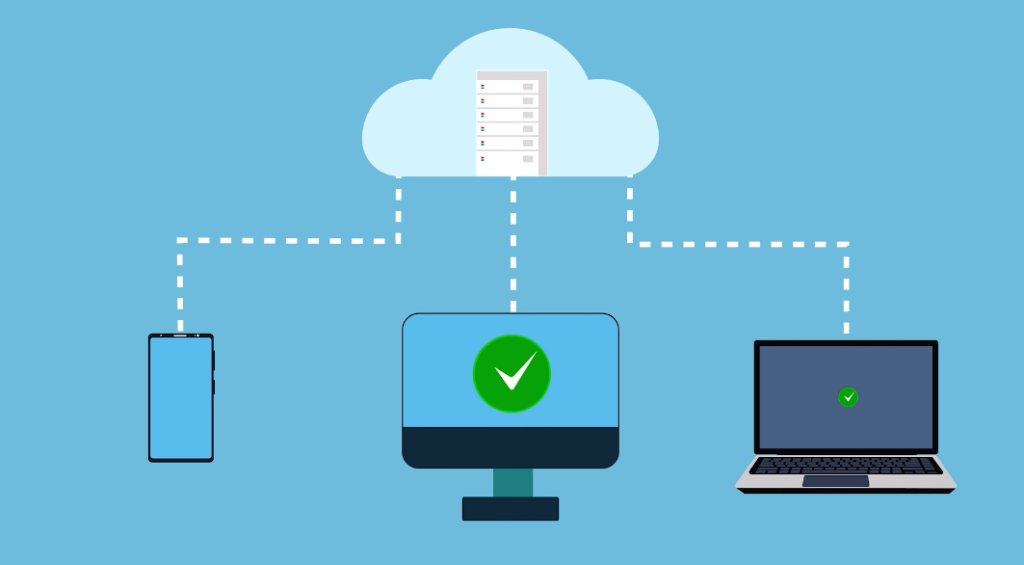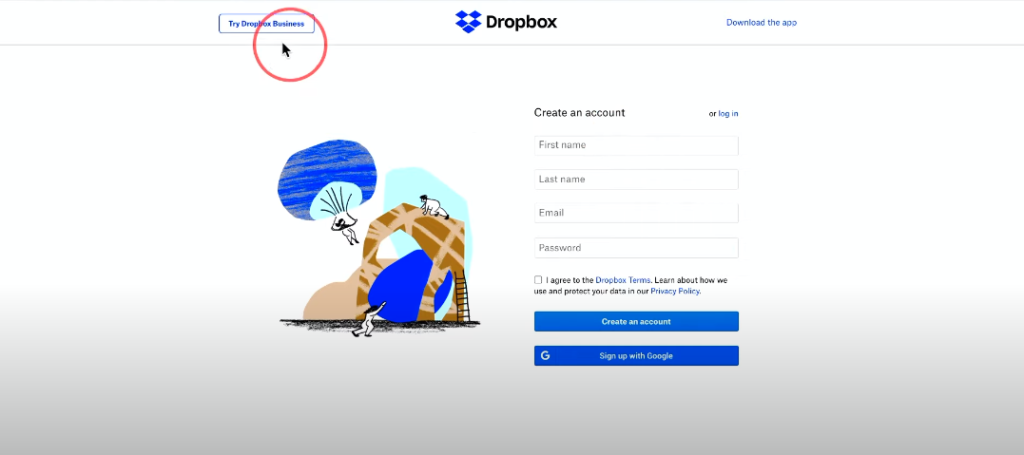Introduction
In today’s digital age, data security has become more important than ever before. As businesses and individuals increasingly rely on cloud-based storage and remote access to sensitive information, it is essential to ensure that this data remains protected from unauthorized access. One of the most crucial aspects of data security is encryption, which serves as a critical safeguard for confidential information.
Dropbox is one of the most popular cloud storage services available today, used by millions of people worldwide. So, it’s natural for users to be concerned about whether Dropbox encrypts their data or not. Dropbox uses state-of-the-art encryption methods to protect user data from unauthorized access. All files stored in Dropbox are encrypted both while being transferred and while at rest.
Understanding Encryption
Definition Of Encryption

Encryption is the process of converting plain text into a ciphered form, making it unreadable without a special key to decrypt the data. Encryption offers an added layer of security and privacy for sensitive information, such as banking details or personal messages. The most common encryption methods rely on complex algorithms that scramble the original data to make it difficult to decipher.
Data is encrypted in two ways: symmetric and asymmetric. Symmetric encryption uses the same key for both encrypting and decrypting data, while asymmetric encryption uses a public key for encrypting data and a private key for decrypting it. Asymmetric encryption is considered more secure because it does not require sharing the private key with others.
Types Of Encryption
There are several types of encryption that can be used to secure data, and they all work in slightly different ways. The most commonly used type of encryption is AES (Advanced Encryption Standard), which uses a symmetric key system to encrypt and decrypt information. This means that the same key is used for both encryption and decryption, which makes it faster and more efficient than other methods.
Another popular type of encryption is RSA (Rivest-Shamir-Adleman), which uses a public-key system to encrypt data. With RSA, one key is used for encryption and another for decryption. The public key can be shared freely with anyone who wants to send you encrypted data, while the private key remains secret and only you can use it to decrypt messages.
There’s SHA (Secure Hash Algorithm), which doesn’t actually encrypt data but instead creates a hash value that acts as a digital signature or fingerprint. This ensures that any changes made to the original data can be detected, making it useful for detecting tampering or ensuring authenticity.
Dropbox Encryption
How Dropbox Secures User Data?

Dropbox is known for its security measures, particularly when it comes to protecting user data. The company implements a combination of encryption technologies and access controls that safeguard user data both in transit and at rest.
Encryption At Rest And In Transit?
Encryption is a security measure that involves encoding data so that it can only be accessed by authorized parties. Encryption at rest refers to the encryption of data while it is stored in storage devices, such as hard drives or servers. This type of encryption ensures that the data remains secure even if the device is lost, stolen, or compromised. Dropbox uses Advanced Encryption Standard (AES) 256-bit encryption for files at rest, which is considered one of the strongest encryption protocols available.
Encryption in transit refers to the encryption of data while it is being transmitted from one device to another over a network. This type of encryption prevents unauthorized individuals from intercepting and accessing sensitive information during transmission. Dropbox uses Secure Sockets Layer (SSL)/Transport Layer Security (TLS) to encrypt all data sent between its servers and clients. The SSL/TLS protocol provides end-to-end encryption for all file transfers, ensuring that users’ files are protected against interception and eavesdropping by third parties.
Encryption Protocols Used By Dropbox
Advanced Encryption Standard (AES) is used to encrypt files on users’ devices before they are uploaded to Dropbox servers. Asymmetric keys are also used to protect user data, with each file being encrypted using a unique key pair.
In addition to these measures, Dropbox also uses SSL/TLS encryption for all data that is transferred between users’ devices and its servers. This ensures that all data sent or received is protected against interception or tampering by third parties.
Limitations of Dropbox Encryption
Access To User Data By Dropbox
Users’ files are encrypted when they are uploaded or downloaded from Dropbox’s servers and remain encrypted when stored on their servers. While this level of encryption may seem sufficient, it’s important to note that Dropbox has access to the keys necessary to decrypt user data. In other words, if required by law enforcement agencies or government authorities, Dropbox could potentially provide access to user data.
Third-Party Access To User Data
While the company promises encryption and security, there have been instances where third parties were able to access users’ files without their consent. One such incident happened in 2012 when Dropbox made changes that allowed employees to view user data for troubleshooting purposes. While the company claimed that this access was heavily restricted and monitored, it still raised questions about privacy.
Additionally, Dropbox also faced criticism in 2013 when news broke that the company shared some user data with government agencies as part of a surveillance program. The revelation prompted concerns about how much control companies have over users’ data and whether they can be trusted with safeguarding sensitive information.
Limitations Of Dropbox’S Encryption Protocols
One limitation is that Dropbox holds the keys to users’ encrypted files, which means they have access to users’ data. This has raised concerns over user privacy and confidentiality since Dropbox can potentially access and share users’ data with third parties, including government agencies.
Another limitation is that Dropbox’s encryption does not cover metadata such as file names, sizes and modification dates. This means that anyone with access to a user’s account can view this information without having to decrypt the actual files.
Dropbox Security Features

Two-Factor Authentication
Dropbox offers two-factor authentication as an additional security feature for its users. Once enabled, Dropbox will require users to enter a verification code sent via SMS or generated by an app on their phone in addition to their password. This ensures that only authorized individuals have access to sensitive data stored on Dropbox.
Suspicious activity alerts
Suspicious activity alerts are designed to notify users of any unusual activity on their account, such as a login from an unfamiliar device or location. When suspicious activity is detected, Dropbox will send an email notification to the user’s registered email address.
The alert includes details about the suspicious activity, such as the IP address of the device that accessed the account, and the time and date of access. This information can help users determine if they need to take further action, such as changing their password or revoking access to third-party apps that may be connected to their Dropbox account.
Enabling suspicious activity alerts is easy and can be done from within a user’s Dropbox account settings.
Password Requirements And Storage
The strength and complexity of passwords can determine how secure an account is from unauthorized access. Most cloud storage providers require users to create strong passwords comprising a mix of upper and lower-case letters, numbers, and special characters.
In addition to password requirements, cloud storage providers also use various encryption methods to protect user data. For instance, Dropbox uses AES-256-bit encryption for files at rest and SSL/TLS for files in transit. This ensures that even if hackers manage to gain access to stored files or intercept data in transit, they cannot decode it without the appropriate decryption key.
Device Linking And Unlinking
Linking a device allows you to access your Dropbox account from that device while unlinking it removes access. This is particularly useful if you’ve lost a device or it has been stolen, as you can quickly revoke its access to your files.
To link a device to your Dropbox account, simply sign-in on the new device and follow the prompts. You’ll be asked to verify your identity either by entering a verification code sent via text or email or by using two-factor authentication. Once linked, the device will have access to all of the files and folders in your Dropbox account.
On the other hand, unlinking a device is just as simple. Go into your account settings and find the “Devices” section. Click on the specific device you want to remove and select “Unlink”. You’ll be prompted to confirm this action before it takes effect. It’s important to note that once unlinked, all synced files will be removed from that specific device but they will not be deleted from other linked devices or cloud storage servers like Amazon AWS S3 where Dropbox stores their data encrypted at rest for security purposes.
Dropbox Business Encryption
Dropbox Business and Enterprise accounts offer additional security options such as two-factor authentication, single sign-on (SSO), and advanced sharing controls.
To ensure compliance with data privacy regulations, Dropbox has implemented various measures to protect users’ information. Dropbox employs AES (Advanced Encryption Standard) 256-bit encryption for files at rest and SSL/TLS (Secure Sockets Layer/Transport Layer Security) for files in transit. This means that all data stored on Dropbox servers and all data transferred between Dropbox servers and clients are encrypted.
How to Protect Your Dropbox Data?
Best Practices For Secure Dropbox Usage
Ensure that all of your devices are protected with strong passwords and up-to-date antivirus software. This reduces the risk of malware or other malicious programs infecting your computer and potentially accessing sensitive data stored on Dropbox. Carefully manage shared folders and links. Only share files with trusted individuals or groups, and consider setting expiration dates on links to limit their accessibility over time.
Backup And Recovery Strategies
A good backup strategy involves creating multiple copies of your data, storing them in different locations, and ensuring that they are easily recoverable in the event of a disaster or data loss. By implementing an effective backup strategy, you can minimize downtime, protect your data from cyber-attacks or accidental deletion, and ensure that business operations continue uninterrupted.
Frequently Asked Questions
Is Dropbox Secure For Personal Use?
Dropbox provides robust encryption measures to ensure that user data remains secure. All files uploaded to Dropbox are encrypted using 256-bit Advanced Encryption Standard (AES), which is considered one of the most secure encryption methods available.
In addition, Dropbox also uses SSL/TLS protocols to encrypt all data transfers between their servers and user devices. This ensures that any data transmitted over the internet is kept private and protected from unauthorized access. However, it’s important to note that while Dropbox takes significant steps to ensure security, no online service can offer complete protection against all possible attacks or breaches.
Can Dropbox Employees Access My Data?
There are instances where Dropbox employees may need to access user data, such as when providing technical support or troubleshooting issues. In these cases, Dropbox requires its employees to follow strict protocols and obtain necessary permissions before accessing any user data. Additionally, all employee activity on the platform is logged and monitored for security purposes.
Can Dropbox Be Hacked?
The answer is yes, Dropbox can be hacked like any other online service. However, the likelihood of a hack occurring depends on a number of factors.
One important factor is the strength of your password. If you have a weak password, it will be easier for hackers to gain access to your account. Additionally, if you use the same password for multiple accounts, it increases the risk of all your accounts being compromised in case one gets hacked.
Another factor that can increase the risk of a Dropbox hack is using unsecured networks or devices to access your account. If you log into Dropbox from an unsecured network or device, there’s a higher chance that someone could intercept your login credentials and gain access to your account.
Is Dropbox Encryption Sufficient For Sensitive Data?
Dropbox is considered strong and can effectively safeguard sensitive information from attacks by cybercriminals or unauthorized access. Additionally, Dropbox also provides two-factor authentication (2FA) to further ensure that only authorized personnel can access a user’s account.
How Can I Increase The Security Of My Dropbox Account?
Enable two-factor authentication (2FA). This adds an extra layer of protection by requiring a unique code sent to your phone or email in addition to your password when logging in. To enable 2FA, go to your Dropbox settings and select “Security.” From there, you can choose the method for receiving codes and turn on 2FA.
Regularly change your password. Strong passwords should be at least 12 characters long, include uppercase and lowercase letters, numbers, and symbols. Avoid using common phrases or personal information that could be easily guessed. Dropbox also offers a feature called “Password Manager,” which generates strong passwords for you and securely stores them within your account.
Conclusion
Dropbox offers strong encryption methods to ensure that user data is secure. The platform uses AES-256 bit encryption to protect all data at rest and in transit. Additionally, Dropbox offers two-factor authentication and SSL/TLS for added security measures.
While there have been concerns about privacy breaches in the past, Dropbox has taken steps to address those issues through transparency reports and compliance with international data protection regulations. However, it is important for users to also take responsibility for their own security by creating strong passwords and regularly updating them.
